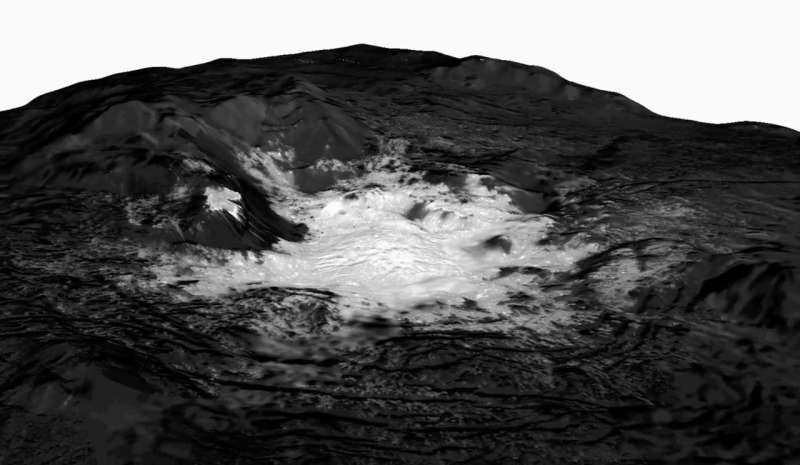Image: Bright spots on Ceres

Bright surface features on the dwarf planet Ceres known as faculae were first discovered by NASA's Dawn spacecraft in 2015. This mosaic of one such feature, Cerealia Facula, combines images obtained from altitudes as low as 22 miles (35 km) above Ceres' surface. The mosaic is overlain on a topography model based on images obtained during Dawn's low altitude mapping orbit (240 miles or 385 km altitude). No vertical exaggeration was applied. The center of Cerealia Facula is located at 19.7 degrees north latitude and 239.6 degrees south longitude.
During its mission of over a decade, the Dawn spacecraft has studied the asteroid Vesta and dwarf planet Ceres, celestial bodies believed to have formed early in the history of the solar system. The mission's goal is to characterize the early solar system and the processes that dominated its formation.
Provided by NASA





















